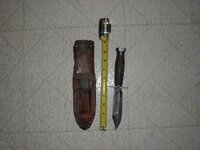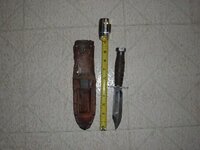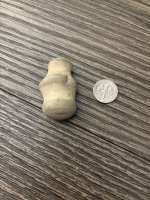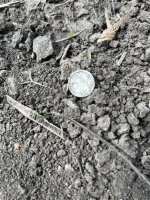Fropa
Hero Member
Hello. I've got a White's Spectrum XLT but virtually no experience. I have the opportunity to hunt around what used to be a school and the principles house. I've heard the school had been there since the late 1800s or early 1900s. Since I have the detector but minimal experience I decided to check some of my back yard today and see if I could find anything. I used the coin & jewelery program in the detector. My first couple swings and I had a hit. I found a cent. Next two signals the were identified exactly by the XLT. First was a quarter and the next was a nickel, just like the target icons showed. Found another cent and what I think was a fishing sinker. Then I got a strong hit and started digging. I was down to about 8" and still hadn't found anything. The strongest signal was still right over the hole so I dug a little farther and found a small piece of foil, then the rest of a large foil ball. Last signal was over about a 8-10" area. It took two holes to find the remains of a rusted tin can and tire balancing weight. No exciting finds in general but at least I know I can find something with my detector. The coins were a 1984-D cent, 1987-D cent, 1960-D nickel, and a 1978 quarter.

Since I'm really new to the hobby and have the chance to search what could be a very good site, any tips or advice from the experts here would be very appreciated. These are the tools I've put together so far:

The skewers I planned to use as probes but I never pin pointed anything with them today. I dug all the targets with the black handled transplanter. My holes were probably bigger than they needed to be. Are there any online videos or pictorial guides showing good techniques to removing coins with little to no evidence?
Thanks for any help.

Since I'm really new to the hobby and have the chance to search what could be a very good site, any tips or advice from the experts here would be very appreciated. These are the tools I've put together so far:

The skewers I planned to use as probes but I never pin pointed anything with them today. I dug all the targets with the black handled transplanter. My holes were probably bigger than they needed to be. Are there any online videos or pictorial guides showing good techniques to removing coins with little to no evidence?
Thanks for any help.
Upvote
0






